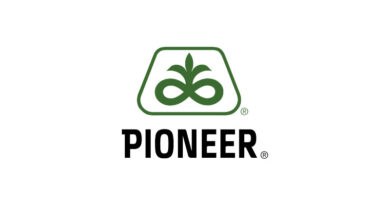Farmers Watching Corn Fields Closely for Uniform Emergence This Spring
19 April 2022, US: Following planting, corn farmers’ attention turns to monitoring plant emergence. That’s evidenced by a recent Pioneer poll, which showed that two-thirds of farmers know delayed emergence can reduce yield potential by 5 to 9%. And while factors such as weather are out of farmers’ control, there are several steps that can be taken each year to increase the likelihood of even stands and maximum grain yield. According to Matt Essick, Agronomy Manager with Pioneer, it starts with understanding the many factors that can affect emergence.
AUDIO
| Audio Filename: Matt Essick Soundbite 1 | There are three basic requirements for uniform emergence in corn: a viable seed, uniform soil temperature and uniform soil moisture. Anything that influences these requirements can affect uniform emergence in corn. Excess residue can lead to variations in temperature and moisture. Worn planter parts can prevent getting good seed to soil contact. Surface crusts on the soil can be a mechanical barrier to uniform seed emergence. While there are only three primary requirements for uniformity, there are multiple factors that can influence those requirements. (00:31) |
| ANNCR VO | Essick stresses the critical role uniform emergence plays in yield potential at harvest. (00:05) |
| Audio Filename: Matt Essick Soundbite 2 | Uniform emergence is one of the foundations of yield. Each kernel of seed needs the opportunity to produce a large uniform ear and kernels that have delayed emergence will not have that opportunity. Research has clearly shown that we see a 5 to 9% reduction in yields in a stand that isn’t uniform. A plant that comes up even 72 hours late may only produce a three-quarter size ear. This highlights the importance of getting each seed to germinate and emerge at the same time. (00:26) |
| ANNCR VO | So, what can farmers do to improve their probability of even stands? Essick shares his tips. (00:05) |
| Audio Filename: Matt Essick Soundbite 3 | Prepare seed beds and plant only when soils are fit. If you can form a ribbon out of the soil, chances are it is on the wet side. You also want to target a timeframe to plant when soil temperatures are warming. When you make that planter pass, ensure you’re planting at a uniform depth of at least one and three quarters inches and make sure you are planting into moisture. In 2021, I saw quite a few fields that were planted too shallow with seeds placed in dry soil. It is also really important to manage residue and keep it out of the seed furrow. Paying close attention to these details can really help you get the most uniform stand possible. (00:36) |
| ANNCR VO | Essick says another important consideration is hybrid selection. (00:05) |
| Audio Filename: Matt Essick Soundbite 4 | Hybrids differ in their ability to tolerate stress at planting time. Selecting hybrids with higher stress emergence ratings can help reduce variability of stand establishment. Pioneer researchers use data from stress emergence plots to evaluate genetics, seed quality and seed treatments for their influence on stand establishment. This helps us produce the highest quality seed you possibly can, to allow for uniform emergence. (00:24) |
| ANNCR VO | For more advice, Essick pointed farmers to their local Pioneer field agronomist or Pioneer sales representative. Or visit the agronomy section of Pioneer.com. (00:08)Total Time: est. 2 minutes 45 seconds |
Link to Agronomy Research Update: Planting Outcome Effects on Corn Yield
Note: Pioneer Agronomy Manager Matt Essick Is available for interviews to provide more detailed advice for uniform emergence in corn.















